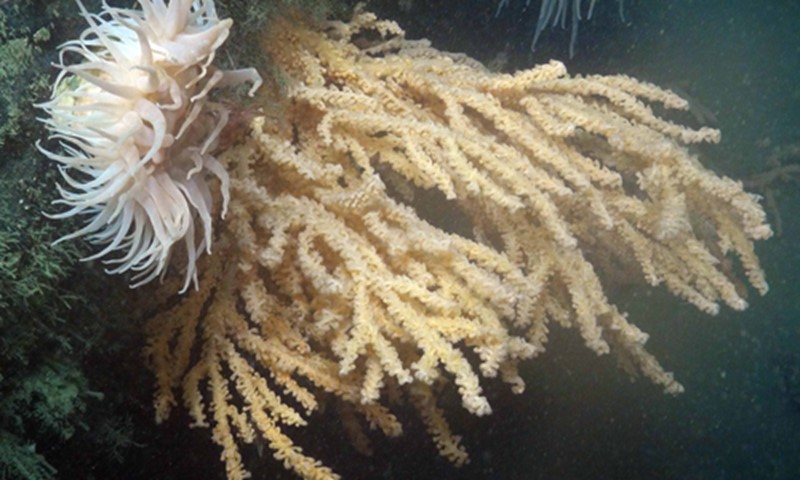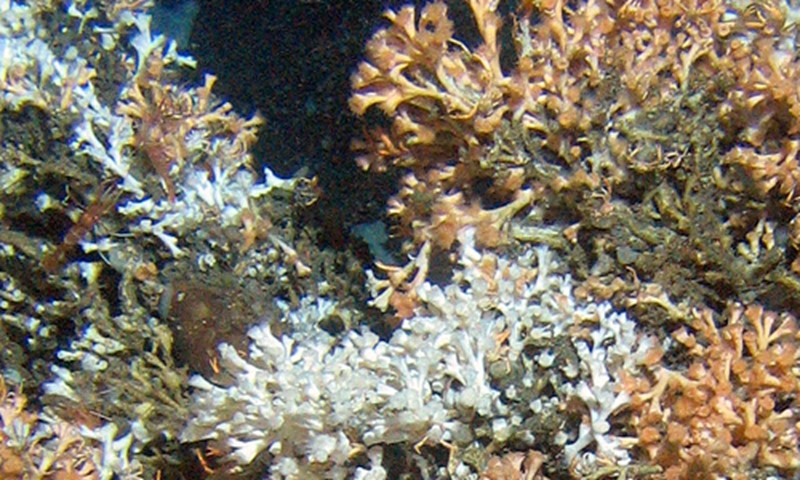Deep Sea Corals
The term coral can include a number of different taxa within the phylum Cnidaria. There are many definitions for coral but the most comprehensive was coined by Dr. Stephen Cairns in his 2007 paper: “Animals in the cnidarian classes Anthozoa and Hydrozoa that produce either calcium carbonate (aragonitic or calcitic) secretions resulting in a continuous skeleton or as numerous, usually microscopic, individual sclerites, or that have a black, horn-like, proteinaceous axis” The taxa that fit this description and have members that are deep sea species (> 50 m depth) include the stony corals (order scleractinia), gold corals (order zoanthidea), black or whip corals (order antipatharia), gorgonians (order gorgonacea), soft corals (order alcyonacea), sea pens (order pennatulacea) and hydrocorals (order anthoathecatae). Deep corals are found in all the world’s oceans from the poles to the tropics on underwater features such as seamounts, canyons and rugged slopes. Our work on deep sea corals varies by region, but includes habitat characterization and community structure and the physiology and reproductive ecology of Lophelia pertusa and other coral species. This data is often used for conservation purposes, particularly in identifying areas for protection.

Southeastern US

Mid-Atlantic Canyons


